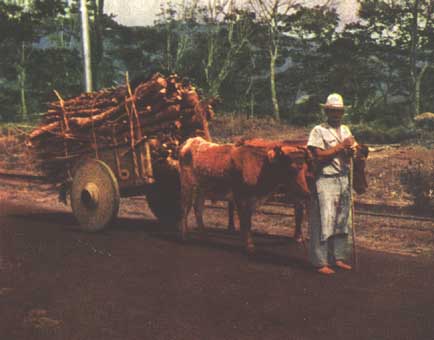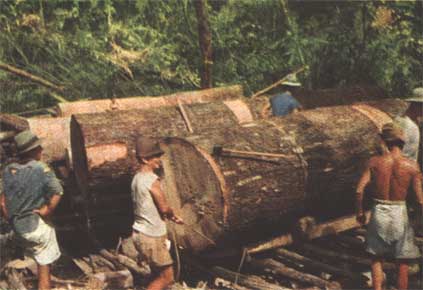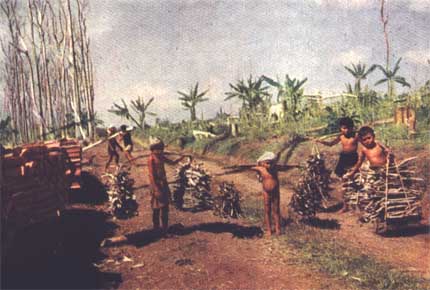CHILE

Advanced erosion or canker of the soil resulting from deforestation. The soil is the prime resource of the world as we know it. We endanger or destroy the soil at our peril - any policy of land use must be synonymous with soil conservation and be in conformity with basic principles of soil use. Foresters alone cannot be expected to formulate such principles. Forestry, despite the many utility values and services of the forest, is only one form of land use. But foresters should certainly have a say in framing principles of this kind in view of the vital contribution that forested areas and forest range zones make to soil conservation, the halting of accelerated soil erosion, and regulation of streamflow.
COSTA RICA

A farmer takes fuelwood to San Jose market by solid-wheeled oxcart. Community and farm woodlands or trees in hedgerows windbreaks or shelterbelts can be a great asset to farmers and villagers especially in relatively poorly forested areas. They can supply timber and fuel for local consumption or provide a supplementary cash income. They reduce the temptation to cut timber illicitly in forest reserves or on critical watershed areas.
CHINA

Near Canton, a laborious method of cutting thin boards from small-diameter logs - all that are available - using a two-man hand saw. Sawing methods, older than recorded history, are now being subjected to careful study. Mechanization alone is not always a clear road to greater efficiency. Skilled management, good maintenance facilities, and properly trained workers are as essential as suitable tools and machines in most mechanized operations.
MALAYA

Extraction by sled in central Malaya. Dipterocarp logs must be cut to short lengths to permit their being, manhandled. Similar practices are common in the Amazon forests of Brazil and in equatorial Africa. Tractors and other modern equipment make it feasible to remove larger and heavier logs difficult or impossible to handle with hand or animal operated equipment, thus improving utilization and opening up new areas for management. Better tools and machines are steadily remaking forest harvesting procedures with resulting economies and reduction in waste.
INDONESIA

Village children in Java gather fuelwood from a teak plantation being clear-cut in preparation for another rotation. Pressure of population and the heavy demand for both food and wood for fuel and timber lend attraction to the system whereby villagers cultivate land for a number of years, and in return plant and tend tree species which will ultimately form plantations. In 1952 an area of 43,000 hectares in Java was put to cultivation under this taungya system; over half were planted up with teak. This is a method of turning shifting cultivation to good account without causing either soil deterioration or the impoverishment or total disappearance of the forest.
JAPAN

Fifty-year-old Cryptomeria japonica in Northern Honshu clear-cut in small patches. The area will be planted with seedlings the following year. The bark has been peeled from the felled trees for use as roof shingles. Because land is a scarce commodity in Japan, it is essential that good silviculture and management practices be used on the areas that can be allocated to forestry. This may, in the public interest, require the regulation of timber cutting on private lands or technical control of such cutting by competent professional foresters.